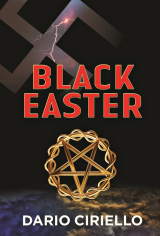 Fifty-five years ago, in 1964, Italian film director Sergio Leone took the film world by storm with the release of A Fistful of Dollars. In the process, he singlehandedly created the spaghetti western subgenre and established Clint Eastwood as a screen icon. Initially panned by critics in Italy, Fistful nonetheless found a cult following; American critics, on the other hand, got the joke, and the rest is history.
Fifty-five years ago, in 1964, Italian film director Sergio Leone took the film world by storm with the release of A Fistful of Dollars. In the process, he singlehandedly created the spaghetti western subgenre and established Clint Eastwood as a screen icon. Initially panned by critics in Italy, Fistful nonetheless found a cult following; American critics, on the other hand, got the joke, and the rest is history.
Fast-forward to 1971. After three more westerns (For a Few Dollars More; The Good, the Bad, and the Ugly; and the glorious, epic, Once Upon a Time in the West) a tired Leone once again took to the dusty hills and arroyos of Andalusia, in southern Spain, to make the final, and most mature, of his western masterpieces.
I’d known of this film for many years, but somehow — despite being a lover of the subgenre — never got around to seeing it until this week, when I found it on Amazon Prime*. If you’re also a Leone fan, I can’t recommend this film highly enough: it’s jaw-dropping, spellbinding, and hugely entertaining.
A meditation on and a critique of both oppression and revolution, the film is visually sumptuous, with many sequences of sheer art — if you’ve seen Once Upon a Time in the West, you’ll get my drift. Coburn and Steiger’s (the latter fresh from In the Heat of the Night) acting is flawless. And Ennio Morricone’s score contributes a perfect, teasing, brilliant counterpoint to the action and the dynamic tension of the film, which balances tongue-in-cheek and sober social commentary.
Set in 1913 during the Mexican Revolution, the film, whose main themes are friendship, the dawning of social conscience, and class struggle, opens with a quote from Chairman Mao**:
“A revolution is not a dinner party, or writing an essay, or painting a picture, or doing embroidery; it cannot be so refined, so leisurely and gentle, so temperate, kind, courteous, restrained and magnanimous. A revolution is an insurrection, an act of violence by which one class overthrows another.”
Enter Rod Steiger as Juan, a raggedy-assed and apparently illiterate Mexican peasant; he soon turns out to be a wily bandit, modeled on the character of Tuco in The Good, the Bad, and the Ugly, with a gaggle of bastard sons for a gang. The first scenes of the film see an increasingly feverish, near-surrealist scene in which Juan is degraded and humiliated by a stagecoach full of rich upper-class Mexicans, who soon get their comeuppance.
As the bandits loot the stagecoach, an explosion up the trail interrupts their business. Moments later, James Coburn appears on a vintage motorcycle from a cloud of dust, very much in the manner of The Man With no Name. The initial face-off between these two is priceless, and Coburn soon reveals himself as Irish Revolutionary John Mallory, a man not to be toyed with on account of the fact that his duster coat is lined with enough dynamite and nitroglycerin to reshape large parts of the landscape.
As the plot develops, the continuing tension between the two protagonists develops into a strong, if unacknowledged friendship, and the initially simple story grows around them. One of the movie’s set-piece scenes, depicting a massacre of revolutionaries by the army, is straight from World War II… as is the German colonel who is the film’s rather surreal antagonist.
The movie’s name went through some interesting changes. In Italy, it was released under the title, “Giú la Testa,” which in English approximates, “Get your head down.” Originally titled, “Duck, you sucker!” in the U.S., the title was later changed to “A Fistful of Dynamite,” to tie in with Leone’s Dollar films. In France, where the film did very well, it was named “Once Upon a Time… the Revolution.”
The genesis of the film was equally tortuous. The screenplay was originally written for Jason Robards and Eli Wallach, who’d respectively starred in Leone’s previous epics, Once Upon a Time in the West, and The Good, the Bad, and the Ugly, but ended up with James Coburn and Rod Steiger in the leading roles. Additionally, Leone didn’t want to direct the movie himself, but after three other candidates (Sam Peckinpah was the second) didn’t pan out, and at Steiger’s insistence that Leone direct the movie, he finally acquiesced.
The review site Rotten Tomatoes gives A Fistful of Dynamite 91%. Brilliant, thoughtful, visually rich, and immensely entertaining, this is a film that deserves to be seen.
Are you a fan of Leone’s work? Have you seen this film?
Notes
* You can watch the movie here on Amazon Prime, or buy it here in various formats
** It’s worth mentioning that the Mao quote, along with several scenes, was cut from the initial 1972 release as they were deemed too politically sensitive for U.S. audiences. The film was banned in Mexico until 1979 as offensive to both the people and the Mexican Revolution.









